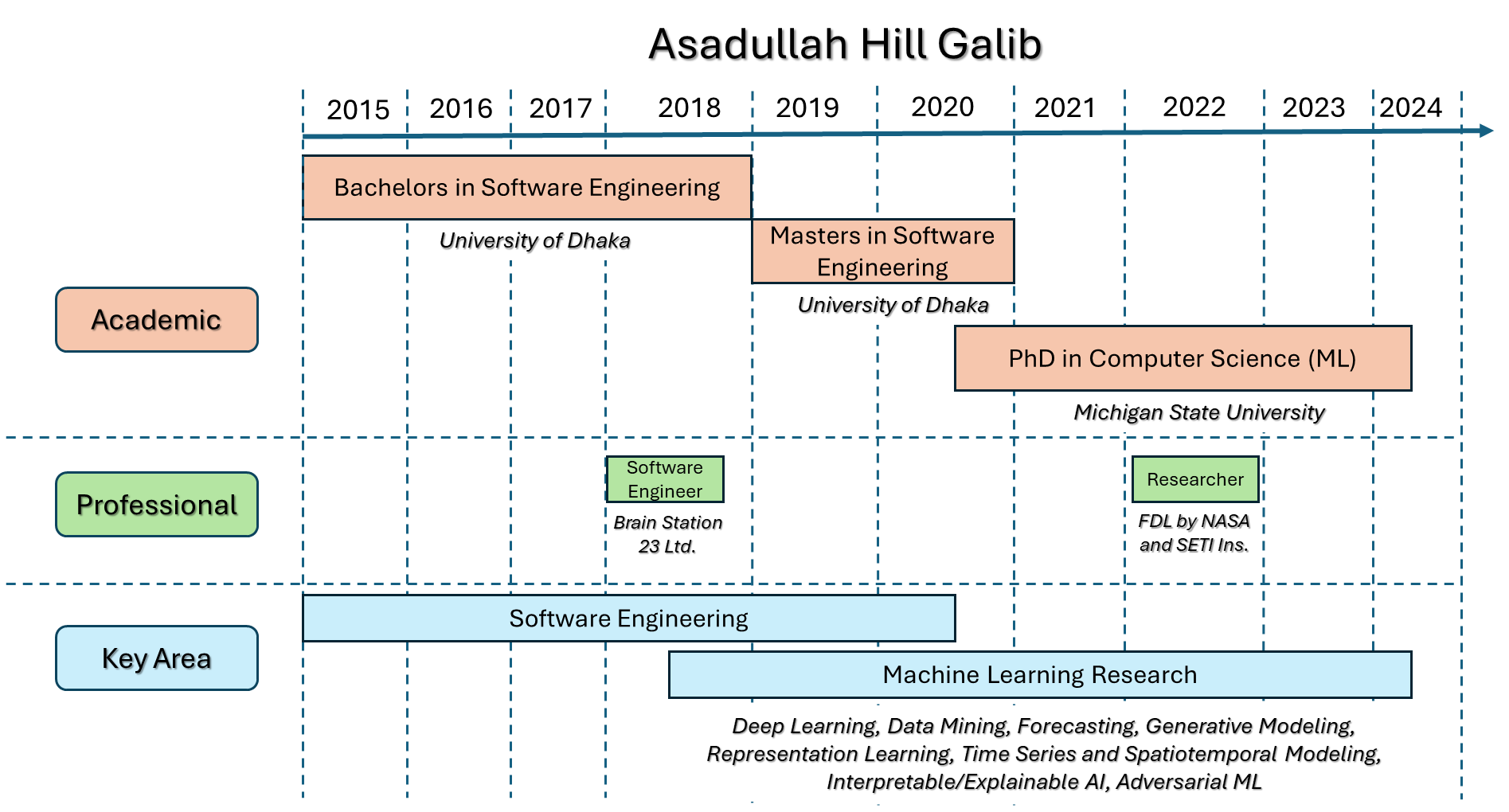
[Open to work and actively pursuing job opportunities]
[PhD Summary] (Link)
As an AI Research Scientist with a Ph.D. in Computer Science, I offer a strong background in Software Engineering coupled with a proven track record of multi-disciplinary research collaboration. I am committed to advancing knowledge through innovations in AI. My experience and academic degrees present a unique blend of proficiency in deep learning, machine learning, software engineering, and statistics.
My PhD research, supervised by Dr. Pang-Ning Tan, focuses on developing novel deep learning frameworks that can effectively model extreme events in time series and spatio-temporal data with the incorporation of Extreme Value Theory (EVT), self-supervised learning, representation learning, and diffusion-based generative modeling. Specifically, my research focus is on both predictive and generative modeling to overcome the challenges associated with extreme value analysis in time series.
Prior to my doctoral studies, I earned my Masters and Bachelors in Software Engineering from the Institute of Information Technology, University of Dhaka, Bangladesh. Beyond the academic realm, I enjoy reading, traveling, gaming, and other exciting pursuits.
Machine Learning and AI Aveneues I have explored:
*Font Notations: Bold Font: Implemented from scratch; Italic Font: Adapted or Applied
*Source/Link Notations: [C]: Code; [P]: Publication/Paper/Report; [U]: Under-review or under-construction or not sharable due to policy/privacy concerns of company/project/agency
Time Series and Spatiotemporal Modeling:
- Extreme events forecasting and classification [C] [P-1] [P-2] [P-3] [P-4] [U]
- Handling large-scale missing values [P]
- Time series representation learning [P]
- Generation of time series addressing extreme events [U]
- Spatiotemporal modeling of gloabal and regional climate [U]
- Adversarial Attacks and Defense of Time Series [C] [P]
- Counterfactual Explanation of Extreme Events in Time Series [U]
- Interpreting Time Series Forecasting with diiferent Attribution Algorithms [C]
Generative AI:
- DDPM, Conditional DDPM [U]
- Deep Convolutional GAN (DCGAN) [C]
- Conditional GAN, TimeGAN, Beta-VAE, Conditional VAE [U]
- Classifier-free Guidance [U]
NLP:
- Neural Machine Translation (Transformer-based) [C]
- Word Embedding (GLoVe) [C]
- Topic Modeling (LDA) [P]
Computer Vision:
- Semantic Segmentation [C-1] [C-2]
- Image to Image Translation (Conditional GAN) [C] [P]
- Image Classification (ConvNets [C], VisionTransformer [U], Swi Transformer [U])
- Image Stitching [C], Colorization [C], Filtering (Gaussian, Sobel, LoG) [C]
Interpretability/Explainability:
- Counterfactual Explanation of Extreme Events in Time Series [U]
- Interpreting Time Series Forecasting with diiferent Attribution Algorithms [C]
- Activation Visualization for Image Classification [C]
Adversarial Machine Learning:
- Adversarial Attacks (FGSM, BIM, PGD) on Time Series [P] [C]
- Adversarial Defense (Adversarial Training) on Time Series [P] [C]
- Gradient-based Adversarial Attack on Images [C]
Representation Learning:
Supervised Learning:
- Link Prediction [C]
- Ridge [C], Sparse Logistic Regression [C], MLR with Gaussian Elimination [C] **
- Feature Selection/Analysis for Malware Detection [P] [C], for Heart Disease Prediction [P] [C]
Unsupervised Learning:
- Community Detection [C]
- PageRank [C]
- Gaussian Mixture Model Clustering [C]
- Spectral K-means Clustering [C]
- PCA [C-1] [C-2]
- Centrality Measure [C]
